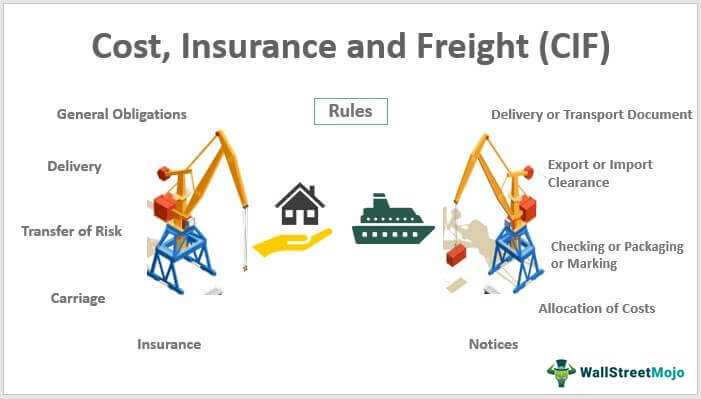Definition of CIF
CIF, or Cost, Insurance, and Freight, is a widely used international trade term that specifies the responsibilities and obligations of the buyer and seller in a transaction. It is commonly used in contracts for the sale of goods between parties located in different countries.
In addition to transportation costs, CIF also includes the cost of insurance for the goods during transit. The seller is responsible for obtaining and paying for insurance coverage that protects the goods against loss or damage while they are in transit.
The buyer, on the other hand, is responsible for paying the cost of the goods, as well as any import duties or taxes that may be applicable. Once the goods have been loaded onto the vessel, the risk of loss or damage transfers from the seller to the buyer.
CIF is commonly used in international trade because it provides a clear and comprehensive set of rules and obligations for both the buyer and seller. By specifying the responsibilities of each party, CIF helps to minimize disputes and ensure that the transaction proceeds smoothly.
| Advantages of CIF | Disadvantages of CIF |
|---|---|
| – Provides a clear allocation of responsibilities between buyer and seller | – Buyer has limited control over the transportation and insurance arrangements |
| – Seller takes on the risk and cost of transportation and insurance | – Buyer may incur additional costs for import duties and taxes |
| – Simplifies the buying process for the buyer | – Seller may inflate the cost of transportation and insurance |
Rules for CIF

When using the Cost, Insurance, and Freight (CIF) trade term, there are several important rules to keep in mind:
- Responsibility: The seller is responsible for delivering the goods to the port of destination and for arranging and paying for transportation to that port. The seller is also responsible for obtaining insurance coverage for the goods during transit.
- Insurance Coverage: The seller must provide insurance coverage for the goods until they reach the port of destination. This insurance should cover the value of the goods and any additional costs incurred during transportation.
- Delivery: The seller must deliver the goods to the port of destination specified in the contract. This includes loading the goods onto the vessel and taking care of any necessary export documentation.
- Transfer of Risk: The risk of loss or damage to the goods transfers from the seller to the buyer once the goods are on board the vessel at the port of shipment. The buyer should obtain any additional insurance coverage needed to protect their interests.
- Customs Clearance: The buyer is responsible for completing any necessary customs clearance procedures and paying any applicable duties or taxes once the goods arrive at the port of destination.
By following these rules, both the seller and the buyer can ensure a smooth and successful CIF transaction.
Example of CIF
Let’s say you are a small business owner who imports goods from overseas. You have just purchased a shipment of products from a supplier in another country and have agreed to the Cost, Insurance, and Freight (CIF) terms. Now, let’s walk through an example to understand how CIF works.
Before we dive into the example, let’s quickly recap what CIF means. CIF is an international trade term that specifies the seller’s responsibility for the goods until they reach the destination port. It includes the cost of the goods, the insurance, and the freight charges.
Step 2: Calculating the CIF Value

| Cost of Goods | Insurance Cost | Freight Charges | CIF Value |
|---|---|---|---|
| $10,000 | $500 | $1,000 | $11,500 |
So, the CIF value for your shipment of 1,000 units is $11,500.
With CIF terms, the seller is responsible for arranging and paying for the transportation of the goods to the destination port. They are also responsible for insuring the goods against any damage or loss during transit. Once the goods reach the destination port, the responsibility transfers to the buyer.
Step 4: Receiving the Shipment


Emily Bibb simplifies finance through bestselling books and articles, bridging complex concepts for everyday understanding. Engaging audiences via social media, she shares insights for financial success. Active in seminars and philanthropy, Bibb aims to create a more financially informed society, driven by her passion for empowering others.
